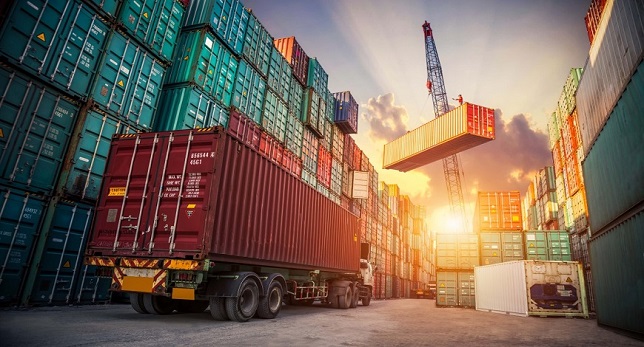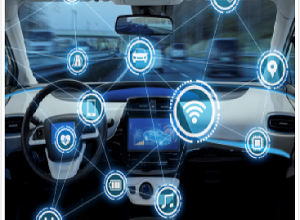Debunking “Top 3 Digital Myths” in Indian Logistics

The epidemic has provided the much-needed catalyst to the maturity of digital in Indian Logistics. From getting information about the availability of oxygen trucks, movement of medicines, tracking of vaccination consignments, a multi-modal movement involving air, rail, and road for emergency pieces of equipment, to online groceries, last-mile deliveries, and other necessities established that digital maturity was not just a hype rather a new disruption to embrace. Globally, as reported by DHL [1], the digital maturity in logistics is far lower than in sectors like media, retail, telecom, insurance, and banking.
The low digital maturity in logistics instigated the need for attention and disruption. So much has been the digital disruption, now, that the lines between the three key elements of Logistics – Man, Material, and Machine (3M) have now started getting blurred & redefined. When all these three key elements work in tandem, the logistics come into life. It is this close-knitted working of 3M which /is being impacted by digital. Though 3M definitions are well defined, however in the context of digital, it is important to re-establish the articulation of the 3M.
Man – includes driver, transporter, fleet owner, logistics personnel both at manufacturing unit/depot/warehouse and corporate office, a policymaker, a non-government stakeholder, and so on. In the digital logistics context, it would mean the persona who is the user of smartphones, understands the digital apps ecosystem, aware of transactions via digital means, and is either the consumer or provider of digital information.
Material – any item or good that is being transported and has a commercial value attached to it. It includes raw material, semi-formed product, final product, a by-product of any other product, and so on. In the digital logistics context, it would mean the digital data logging into a material movement where material’s physical, functional, and metadata information is not only available digitally but also can be transmitted and shared via digital methods in real-time and on-demand.
Machine – would be an instrument/method/means required for transporting the material. It includes means like road, rail, air, shipways and in coming future drones and so on. In the digital logistics context, machines would reflect the means and type of vehicle along with their working behavior, availability, tracking, location visibility, performance, downtime, etc. in digital format. Such information should not only be managed digitally but also should enable predictive and preventive aspects to increase the machine’s life span and reduce occupational risks and hazards.
The low maturity of digital impacted by sudden demand of digital capabilities due to pandemic needs, caught lots of leaders in Indian logistics by surprise. The scarcity of sufficient knowledge and skills to embrace led to the spread of some myths which have become the centerpiece of every conversation now.
Challenging and debunking those myths is a need of time. It is not only important but also necessary to give digital its rightful place in Indian Logistics.
Myth 1 – Automated Driver/Transporter Penalties using digital data would save cost!
Impact Focus – Man
Advice – Digital data only provides the picture, not the whole story!
As per business case understanding, the digital need is for automatic deduction of freight cost and eventually putting cost penalty on the driver/transporter, for a trip, where there has been backward unloading(s) or forward unloading(s). Depending on the type of material being shipped, the penalty may vary. At the outset, it may look like the right thing to do as it would bring transparency and discipline. However, the interpretation of data also matters. One wrong interpretation could result in bad decision-making.
In a country where the driver to truck ratio is 750 per 1000 [2], making an average of 20-30% of trucks lying idle at any given point of time, any level of automation if not done correctly, could do more harm than benefit.
The right way would be to find answers to key questions, like: –
- Is my data (destination, lead data) correct?
- Did the customer change the destination while en-route?
- Was such a change captured by the system?
- Was the route blocked/a new route introduced and there was a detour?
- What is the number of such occurrences over a period?
- Has the device behavior (jump issues, hang, etc.) been considered?
and so on.
We need to be mindful that it is human who is at the center of getting the job done. So, any decision-making would have a direct impact on the business relationship with the driver/transporter and may increase cost than reduce it.
Case in Point – A leading cement manufacturer wanted to penalize drivers due to a rise in unloading discrepancies. It was initially termed as driver behavior and was speculated to have hand-in-glove arrangements with the receiving party. However, post-analysis and investigation, it turned out to be a new route introduction that had resulted in unloading deviations. This prompted a change in the customer’s database for lead distance records. A correction in data resulted in direct freight costs savings and improved relationships with driver/transporters. Instead of automated rules for penalizing, recommendation insights are obtained based on the analytical data using digital platforms, and next-level conversations are then initiated with respective parties.
In Summary – Cost-saving needs long-term thinking and deriving digital benefits would come with experience and maturity.
Myth 2 – Digital will give 100% visibility into material status and condition all the time!
Impact Focus – Material
Advice – Any claim to deliver 100% visibility of material status and condition has to be substantiated with proof!
Consider this – as per the theft report published in 2020[3], India accounted for 64% of the cargo theft among all Asian cargo. Top listed commodities stolen were: –
- Food & Beverages
- Electronics
- Alcohol + Tobacco
- Automotives
- Consumer Products
- Construction Materials
Further, material transported by road remained the top category of theft showing an increase to 37 percent in 2019 from 29 percent in 2018. Report categorized location of thefts as: –
- In-Transit – 37%
- Rest Areas – 16%
- Warehouses – 14%
- Unsecured Road Parking – 7%
And so on.
Adding the data of damaged goods will extrapolate the whole situation to the next level. This raises some questions like –
- Are digital methodologies & tools sufficient to provide visibility into material status & condition?
- Do we need re-look at the stakeholder’s relationship responsible for capturing & managing the material status?
The answers to these questions are not simple. There are multiple layers of dependencies and relationships of stakeholders involved to make things work on the ground.
Leveraging digital technology could establish some checks and balances by invoking timely notifications for key parameters like route deviation, long halts, etc., alerting ground teams in case of accidents, mobilizing support and emergency services, and much more. Implementation of monitoring rules can be enabled via digital platforms to achieve near-real-time actions to mitigate unforeseen scenarios.
Case in Point – A recent story [4] of a leading business establishment in collaboration with a popular e-commerce company was in shock after they realized that they had lost 4,262 boxes valued at 1.35 crores in mere three months. This was despite all standard operating procedures in place. On investigation, it turned out that several people in the logistics chain were involved in the racket.
In Summary – One must accept that once the shipment is out, it is going to be marred by unpredictable scenarios. No two days and scenarios would be the same and the onus is on the stakeholders how they bring agility into monitoring leveraging digital tools and platforms. 100% visibility into material status and condition is a complex relationship to build even with digital and may not be foolproof.
Myth 3 – Digital safety methods & tools are required for only specific business segments!
Impact Focus – Man, Material & Machine
Advice – Safety is not a choice but a necessity and is agnostic to the business segment!
In the Indian logistics context, road transportation controls 67% of the freight traffic[2]. Led by trucks and lorries the accidents from road transportation from the commercial vehicle segment make up the third-highest share of deaths at 10% claiming 15,510 lives[2].
As per the Ministry of Road Transportation and Highways (MoRTH)[5] commercial vehicles account for 3rd highest road accidents in India. An accident affects Man, Material, and Machine (3M) directly, barring the degree of impact, as they are interrelated. As per another survey report on drivers [2], the top reasons for crashes have been:-
- Over speeding – 42%
- Fatigue/Sleepiness – 38%
- Drunk driving – 30%
- Negligent/rash driving – 24%
- Overloading of trucks – 8%
- Tire Burst – 9%
And much more. It is important to note that the accident/crash data in reports is agnostic to any business segment. Thus, challenging the myth of safety methods and tools only applicable for specific business segments. Certain segments indeed need more digital safety methods as compared to others however such arguments should not mislead the conversation of safety versus prioritization.
Case in Point – India accounts for 5 lakh road accidents every year, which is the highest across the world and leads to about 1.5 lakh deaths and 3 lakh are seriously injured in these accidents. Unfortunately, 70 percent of deaths occur in the age group of 18 to 45 years[6]
Minister for Road Transport stated “Aiming to address the long-standing issue of driver’s fatigue and lack of sleep leading to road accidents on Indian roads, especially highways, called for fixing driving hours of truck drivers. He directed that trucks should be fixed with on-board sleep detection sensors to achieve this purpose”[7].
In Summary – The intent is to ensure the safety of human life, along with assets at stake. While on-board sleep sensors could be one of such first steps, the already available capabilities like voice alerts, speed governors, warning notes and so on should be leveraged irrespective of the business segment the trucker operates it.
There is also an emphasis on the need for extensive integration of AI-based technology, which will remove human interference and the possibility of errors. Some identified high priority areas that could benefit from AI-based technology [6], which are in the discussion are:
- forensic post-crash investigations,
- the pattern of accidents due to black spots,
- fatigue indicators,
- sleep detectors for the driver,
- advanced vehicle collision avoidance systems.
Safety methods & tools enabled via digital capabilities are now being offered as factory-fitted devices in the new models of vehicles. Indian automotive ecosystem is already gearing up towards digital safety methods and tools. Almost every manufacturer including supplier and solution providers are part of such initiatives. Startups too are equally playing part in this wave of digital safety in India [8]. Such initiatives are the cornerstones of the new era towards commercial trucking in India.
Epilogue – The “Rightful” Place of Digital
In the Indian context, from the three key elements of logistics- Man, Material, and Machine, it is the first one – Man where the digital impact has yet to be ascertained. The other two elements are already showing signs of adoption and a climbing maturity curve. An end-to-end process redesign has to be initiated if we truly want digital to impact logistics. Most of the digital efforts miss out on the opportunity or at times overlook the role of man in the entire journey.
For example – there is no digital footprint or automation to address the driver’s plight at the port unloading where they are not allowed to get out of their trailers once they enter the port complex. The bigger the vessel, the longer the wait[9]. This is a classic opportunity to address waste and improve efficiency.
For every logistics initiative where cost is at the center, the goal however should be to reduce such waste and focus on efficiency improvement. Cost as a value lever would get derived from such actions. The right approach should be to invest at the right places in logistics vision like automation, visibility into processes, data-driven decision making, skill development to align with modern technologies, and much more.
Digital is a next-gen technology with possibilities and potentials in Indian logistics yet to be realized. With its nimble nature, agility, and relevance, it would not be fair to challenge or slow down its adoption in the logistics sector.
The case stories are the tip of the iceberg and reflect a glimpse of the current state of myths and affairs. Like with any other technological development, the business case needs to be practical and purposeful. Digital adoption should embrace “human-centric” design principles and business stakeholders should avoid getting into over-promised commitments which may show short-term gain but in the long term impact the brand image of the company and business as a whole.
We get challenged so such myths every day and as part of being responsible partners, we put in the time and effort to educate customers in first defining their digital logistics vision and then helping them to derive benefits.
The rightful place of digital is where it provides an immersive experience, not intrusive.
Footnotes: –
- DHL Next-Gen Wireless Trend Report, https://www.dhl.com/global-en/home/press/press-archive/2020/next-generation-wireless-trend-report-explores-the-future-of-iot-in-logistics.html
- Save Life Foundation, Truck Drivers Survey – India, https://savelifefoundation.org/wp-content/uploads/2020/02/design-single-page-27th-feb-2020.pdf
- ITLN, Cargo Theft Report, https://www.itln.in/india-accounts-for-64-of-asias-cargo-theft-in-2019-bsi-tt-club-report-logistics
- Times Of India, https://timesofindia.indiatimes.com/city/hyderabad/ctc-shocker-1-35-crore-gadgets-stolen-in-3-mths/articleshow/89066640.cms
- MoRTH, Road Accidents in India, https://morth.nic.in/sites/default/files/RA_Uploading.pdf
- Road Safety Top Priority, CarandBike, https://www.carandbike.com/news/india-accounts-for-5-lakh-road-accidents-every-year-road-safety-top-priority-of-government-nitin-gadkari-2810884
- Fixing Driving Hours for Truckers to Reduce Accidents, NDTV, https://www.ndtv.com/business/nitin-gadkari-calls-for-fixing-driving-hours-for-truckers-to-reduce-accidents-on-roads-2548826
- ADAS In India, Quanzen, https://www.quanzen.com/2020/11/how-adas-is-making-its-way-into-the-indian-automotive-market/
- Plight of truck drivers, MotorIndiaonline, https://www.motorindiaonline.in/plight-of-truck-drivers-at-busy-mundra-port/
Author:

Jagmeet Singh
CEO
Axestrack Software Solutions Private Limited
Jagmeet Singh is a CEO at Axestrack – the company that pioneered India’s First Unified Digital Logistics Platform. Jagmeet is an automobile engineer, Stanford business graduate, global leader and a tech-enthusiast with a business bent of mind. He was Partner of Cognizant’s digital business consulting, R&D engineer with Reva-India’s First electric car and a growth leader with Infosys Consulting.




